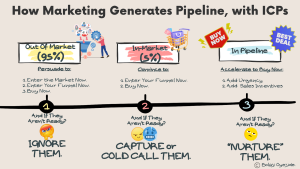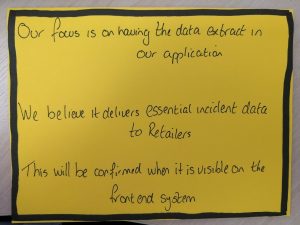You probably don’t consider what you sell to be a commodity, but the truth is, if your prospect can’t clearly distinguish why he should pay more for your product or service than the competitor’s, you may as well be selling water or pork bellies.
Most salespeople recognize the need to have a tailored and specific value proposition in a presentation or demo given today’s competitive environment, however, they often falter when it comes to delivering that value proposition, missing key opportunities to highlight and reinforce it. Many times the value proposition isn’t even mentioned until the closing, which is way too late (read this article and find out why).
Value deserves special attention in several sections of your presentation.
Following are 3 ways to highlight your value proposition in a presentation or demo:
Your Opening:
Your value proposition should make an early appearance in your presentation. It’s more important than who you are or how long your company’s been in business. It is why you were invited to the party in the first place. Within the first sixty to ninety seconds, let your prospect know what value you’re going to add to his organization by introducing a high-level view of your value proposition. This is especially critical with busy C-level executives. Avoid giving a long list of benefits and supporting details, instead, provide your prospect with a preview of what value you’re going to deliver. In other words, pique their interest and give them a compelling reason to stay tuned.
For example:
“Today we’re going to show you how through our group buying power we can help you lower labor costs by as much as 15% and improve your ability to attract and retain high-quality employees with enhanced benefits. We recently worked with a client who shared many of the challenges you’re currently facing. At the end of the presentation, I’ll show you where they are today after implementing our solution and what that means for you.”
Your Agenda:
The vast majority of sales presentations I see use an agenda that is basically a list of product or service features or processes dressed up as topics.
For example:
“Today we’re going to talk about our analytics evaluator, our one-touch report-writer, our metrics converter, and our optimization tool.”
As a potential customer, I don’t really care what you call your features or how they work. What I do care about is how they are going to help solve my problems or achieve my goals. So why not organize your agenda around a list of topics that is meaningful to your customer, in other words, value? You can approach them from either the problems or challenges you’re going to solve, or the results you’re going to help them achieve. Developing a value-centered set of topics for your agenda will highlight your value proposition as you refer back to it throughout your presentation.
For example:
“Today we’re going to cover reducing manual processes and streamlining the hiring process for greater efficiency, and improving global visibility to retain talent in your organization.”
Your Closing:
By the time you get to your closing you will have shown the prospect just how you are going to deliver value to his organization. Now that you have proven it, it isn’t just theory. In your closing connect all the dots and restate your value proposition as a statement of fact for your audience, quantifying (if possible) what outcome they can expect to see from your solution.
TIP: During discovery conversations with your prospect they likely expressed their goals in terms of some type of key performance indicator (KPI), such as revenue, year-over-year growth, cost-per-unit, and so forth. Be sure to use those same terms that your prospect uses.
For example:
“Based on what we’ve shown you, we’re confident we can provide your company with a reduction in labor costs of 10-15% within the first two years, which would result in an estimated savings of $ 825,000.”
Don’t end up competing on price because you’ve failed to highlight your value proposition in a presentation or demo. Weave it into these three areas and let your competitors do the discounting.
Business & Finance Articles on Business 2 Community(29)






